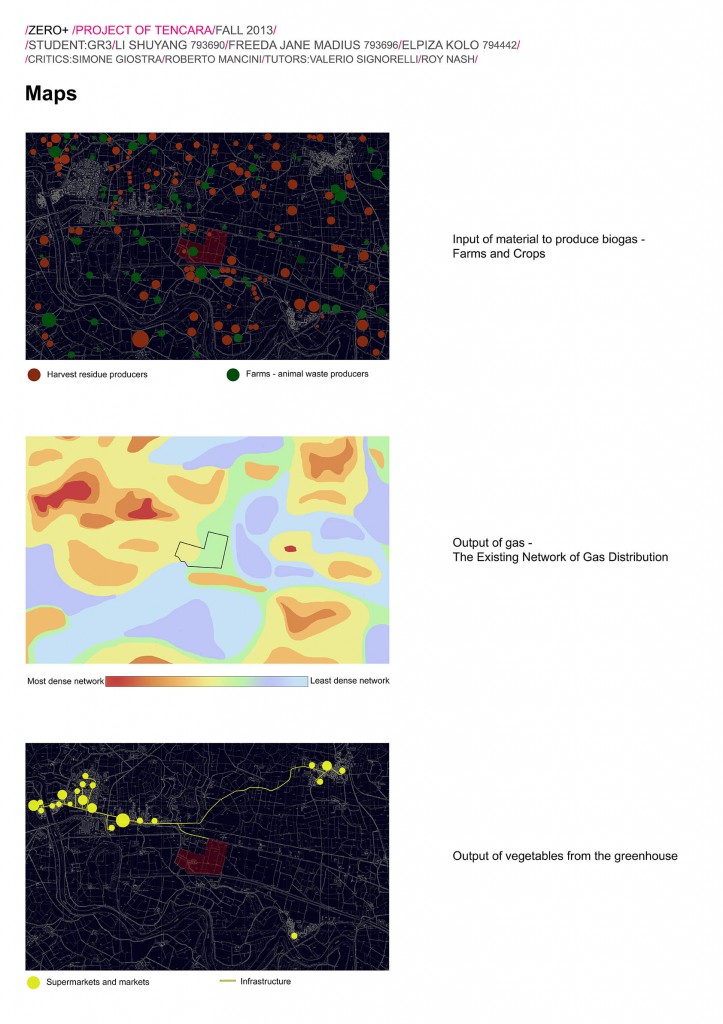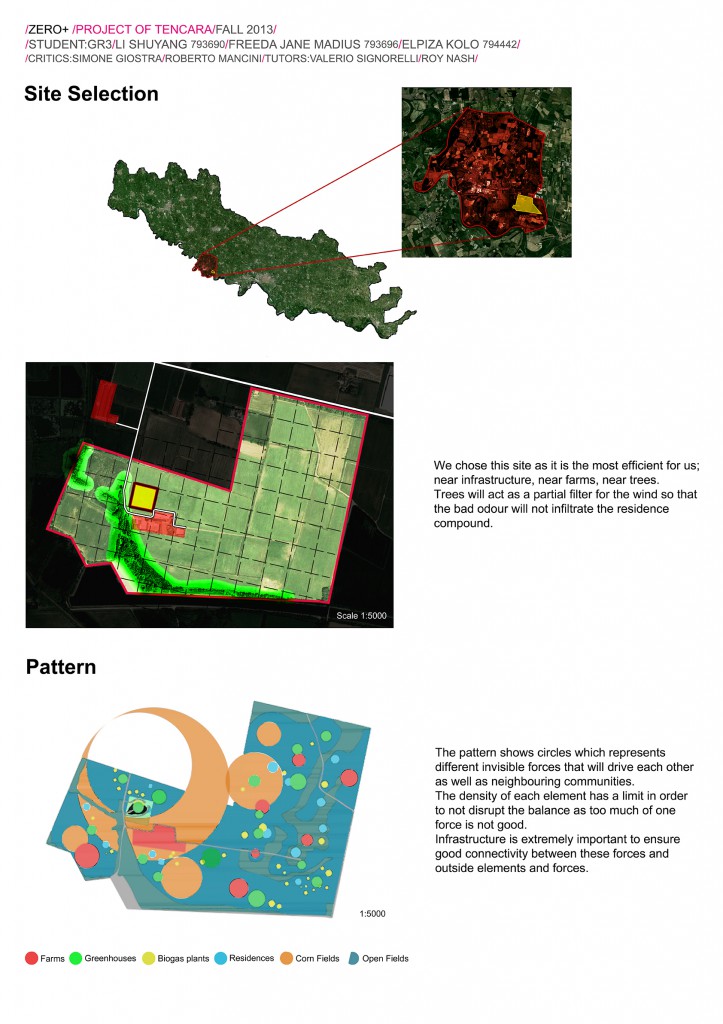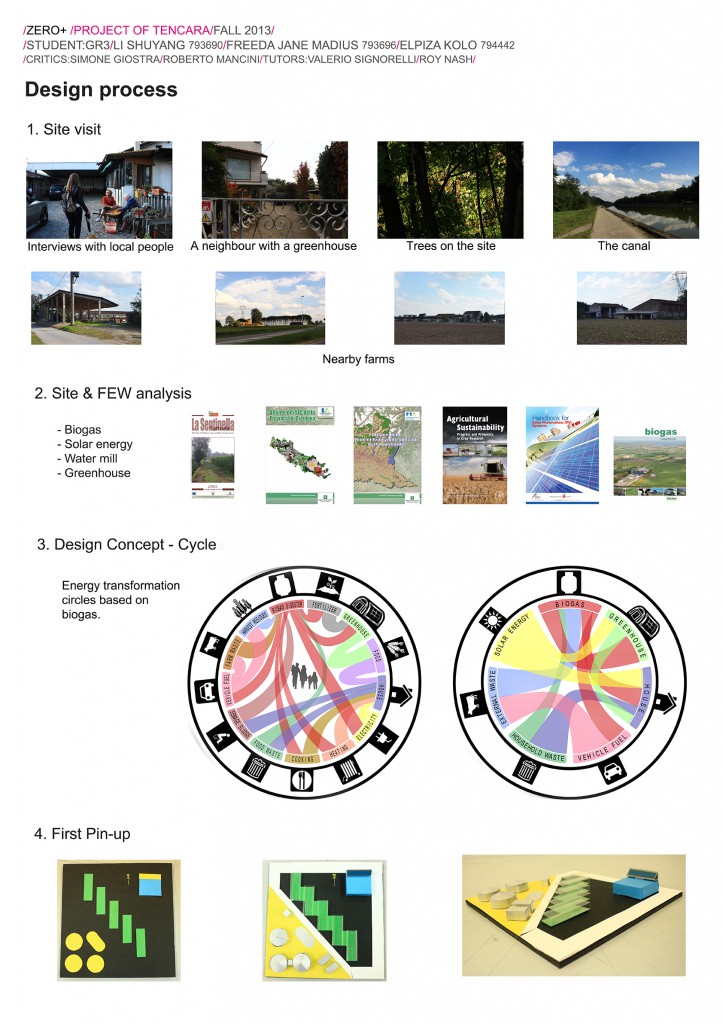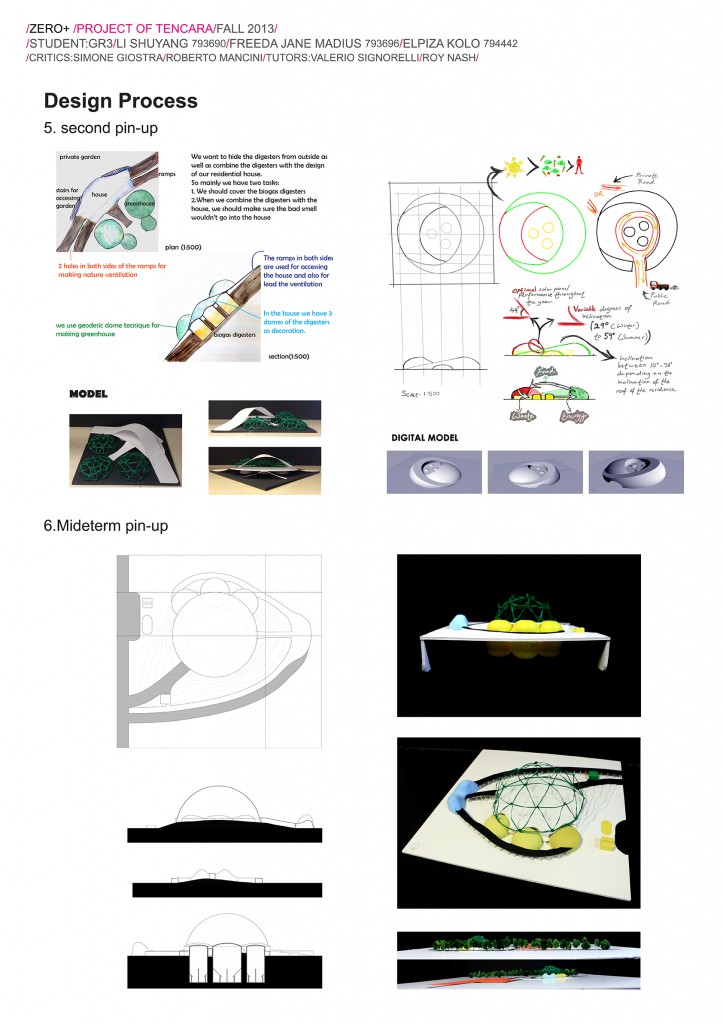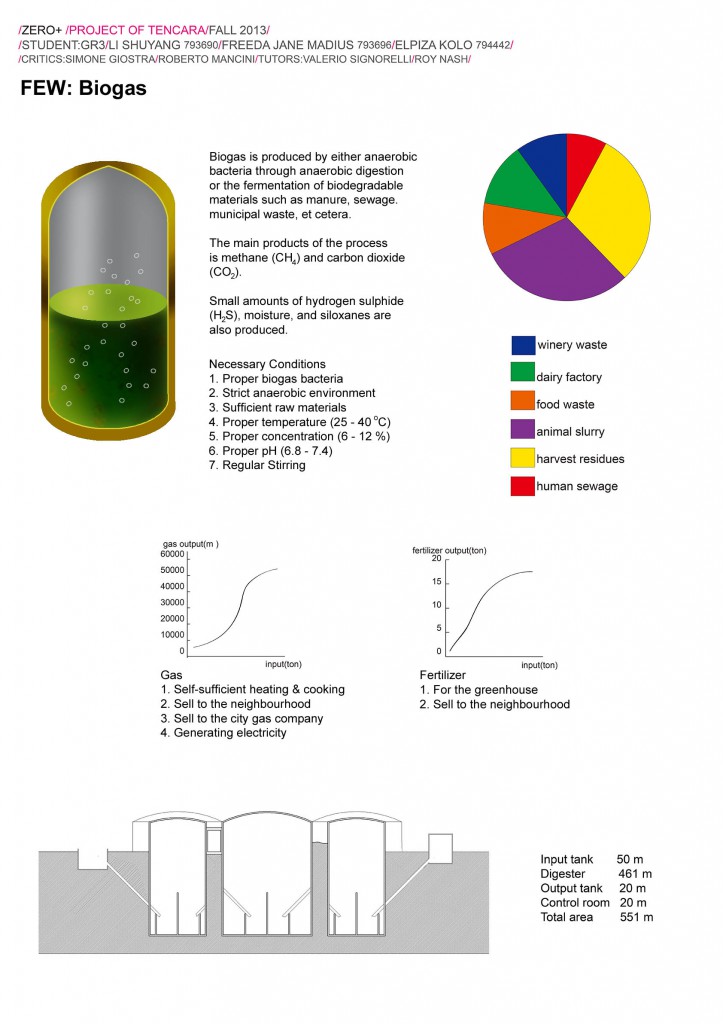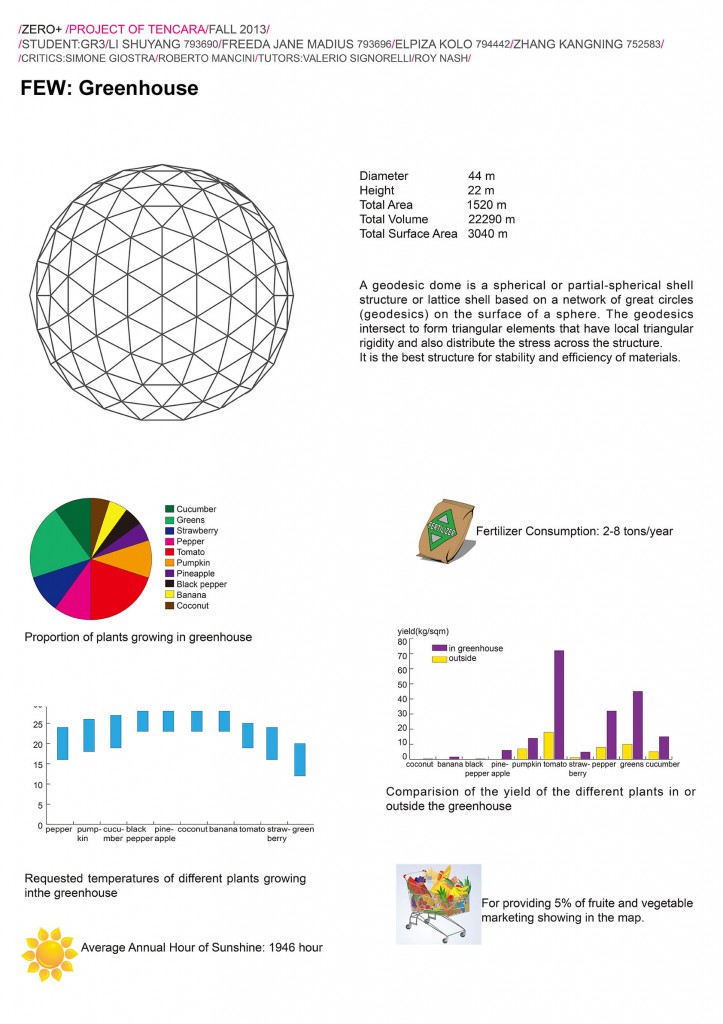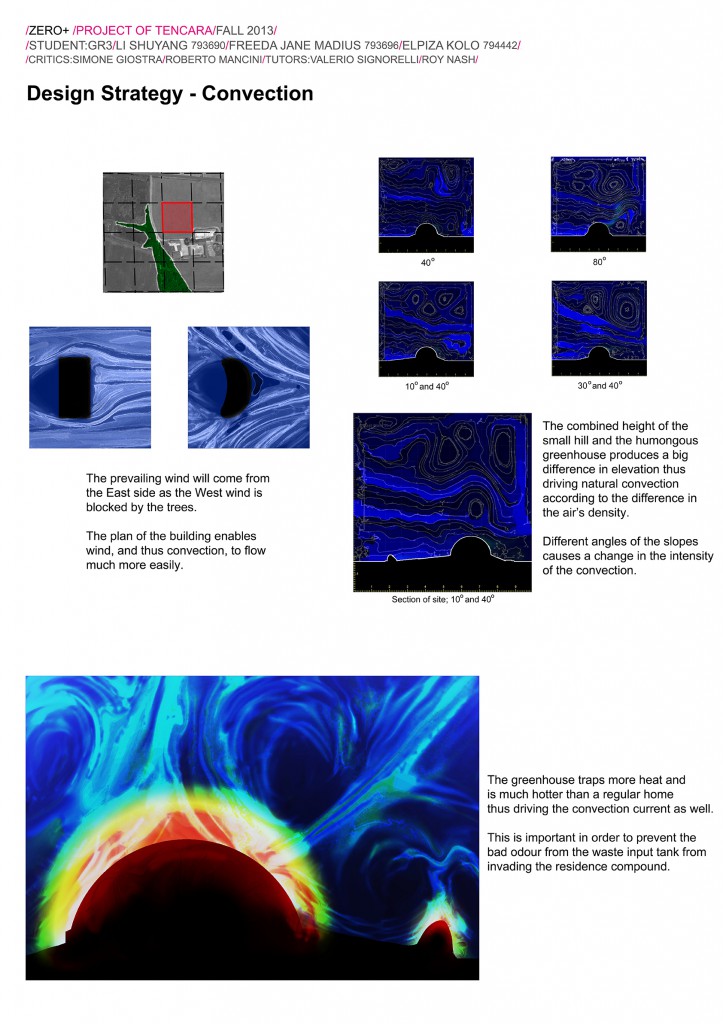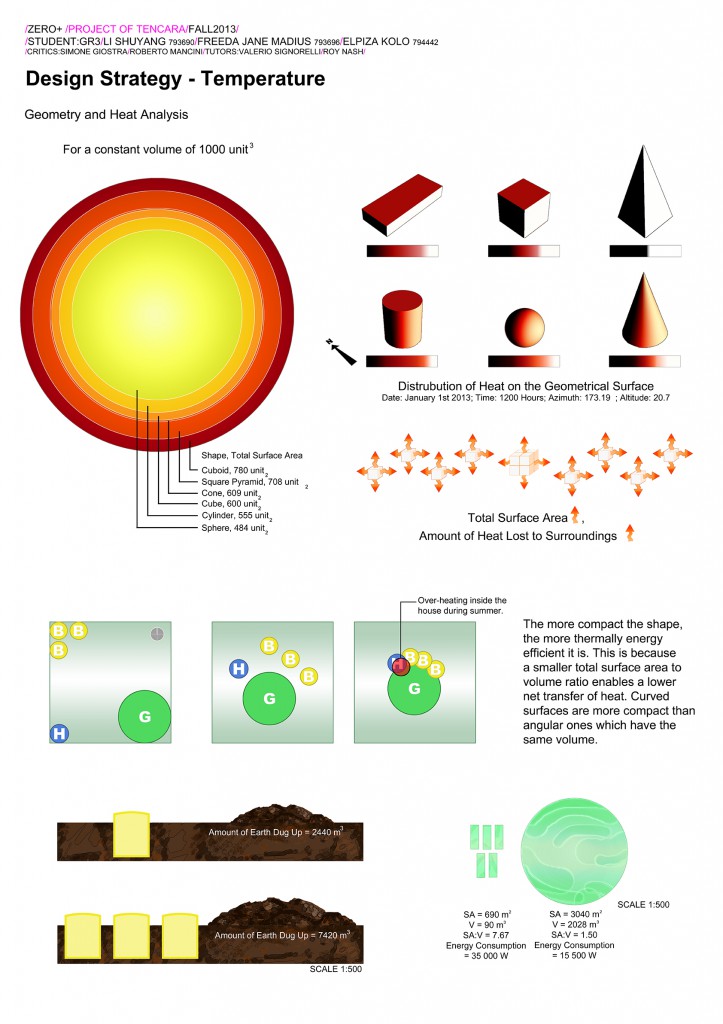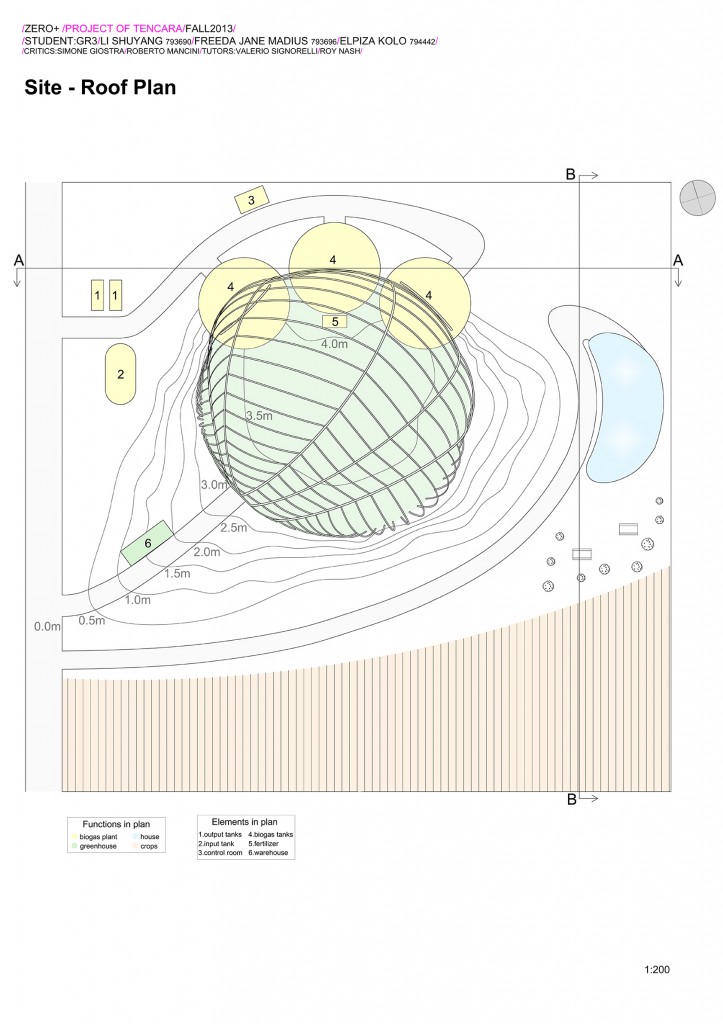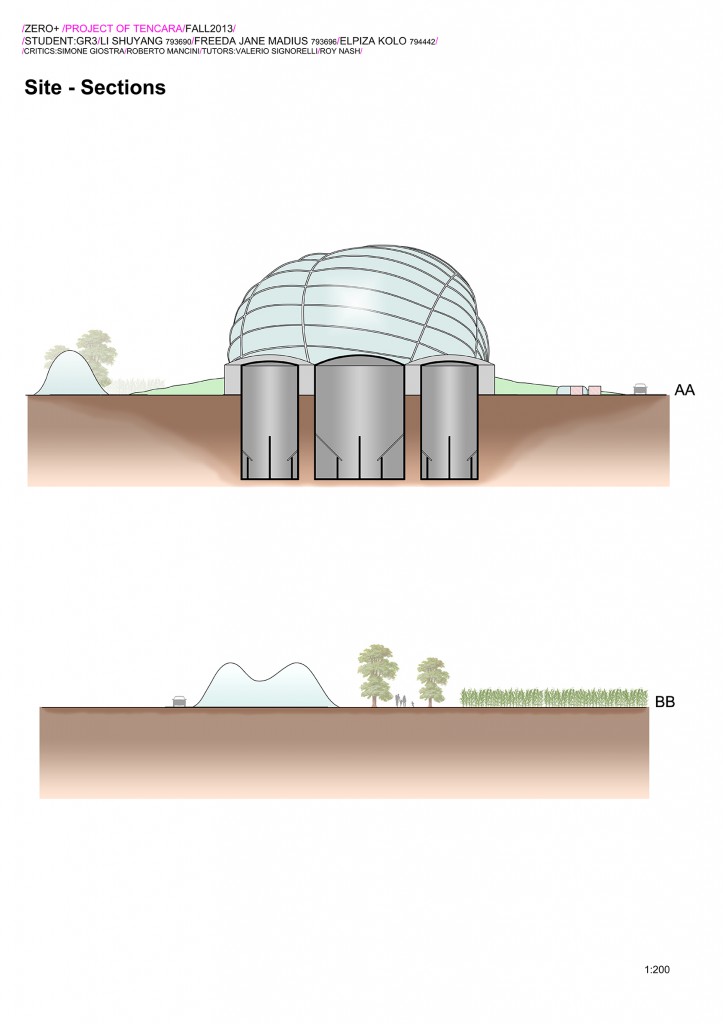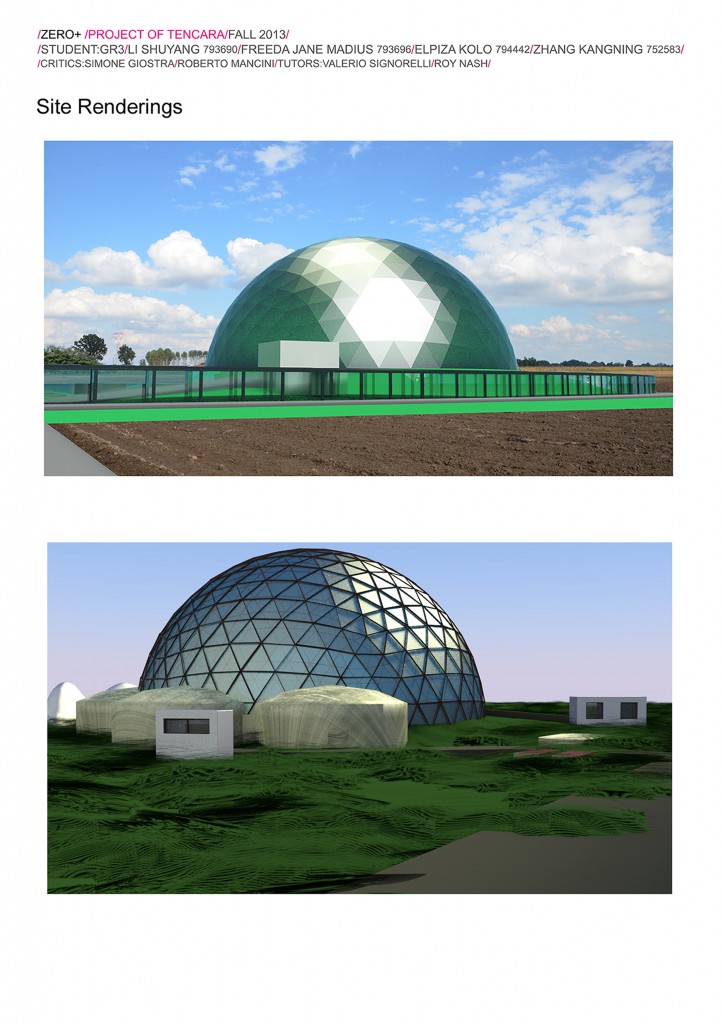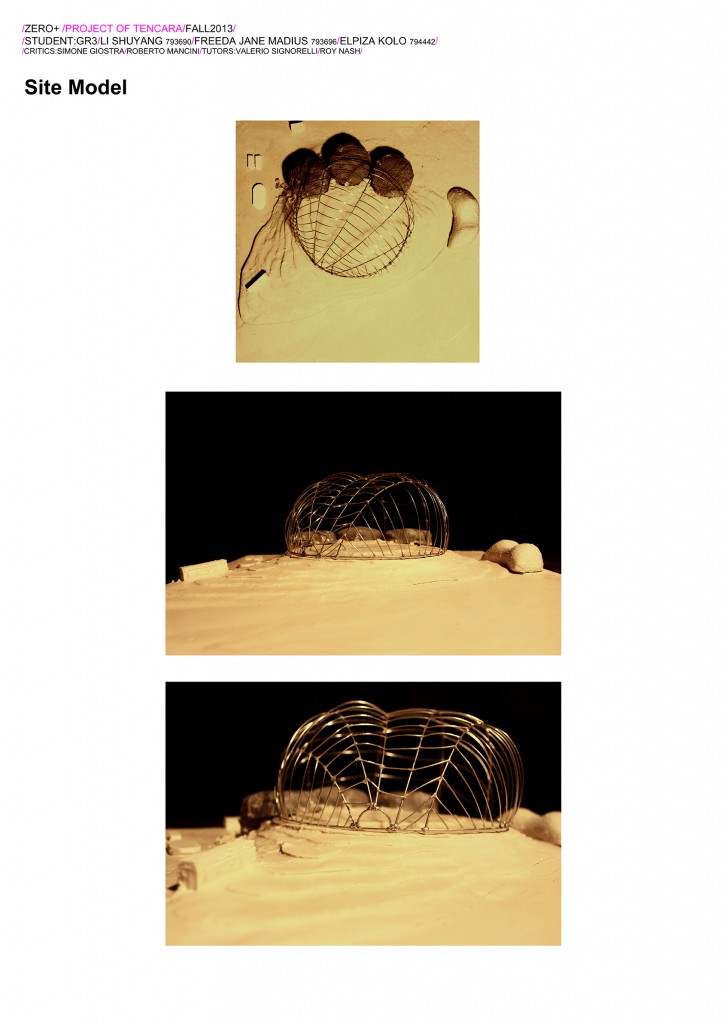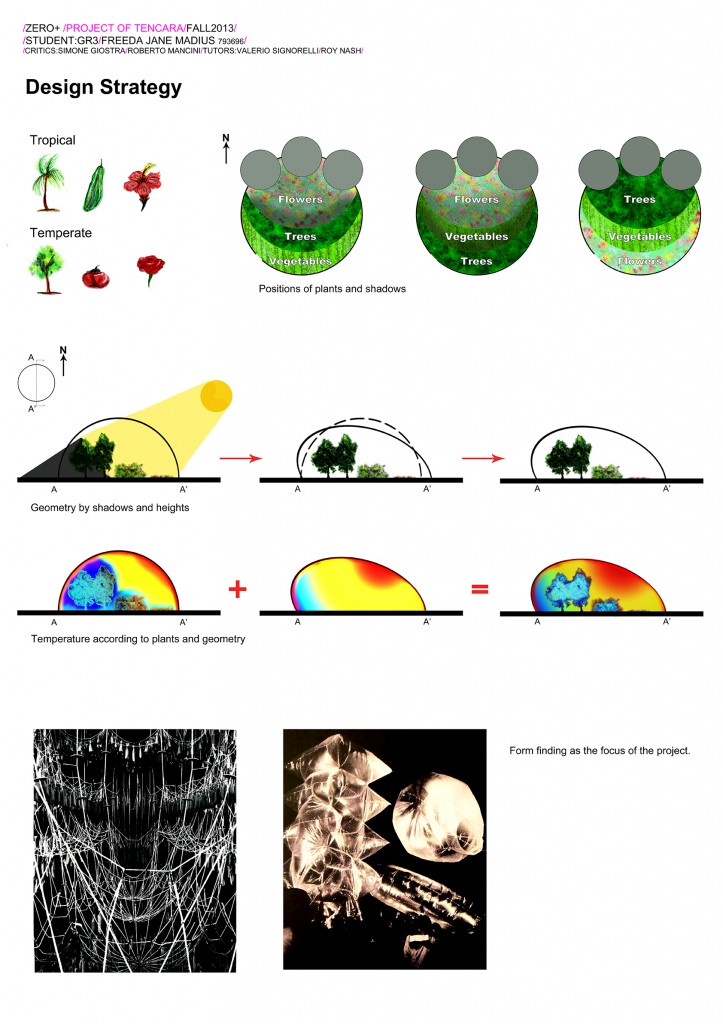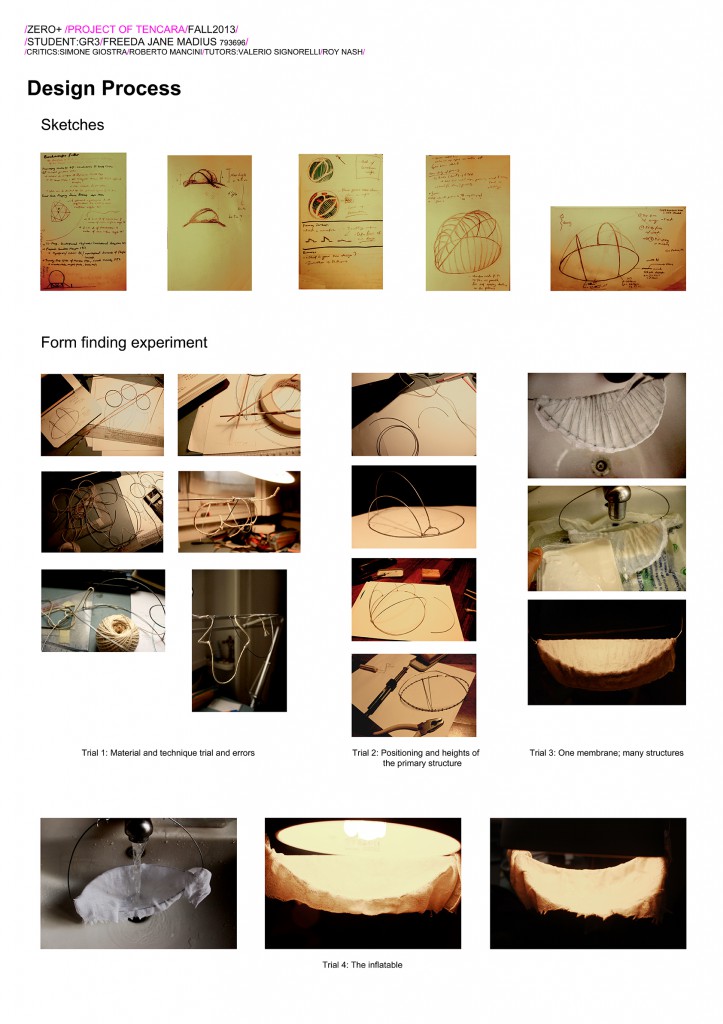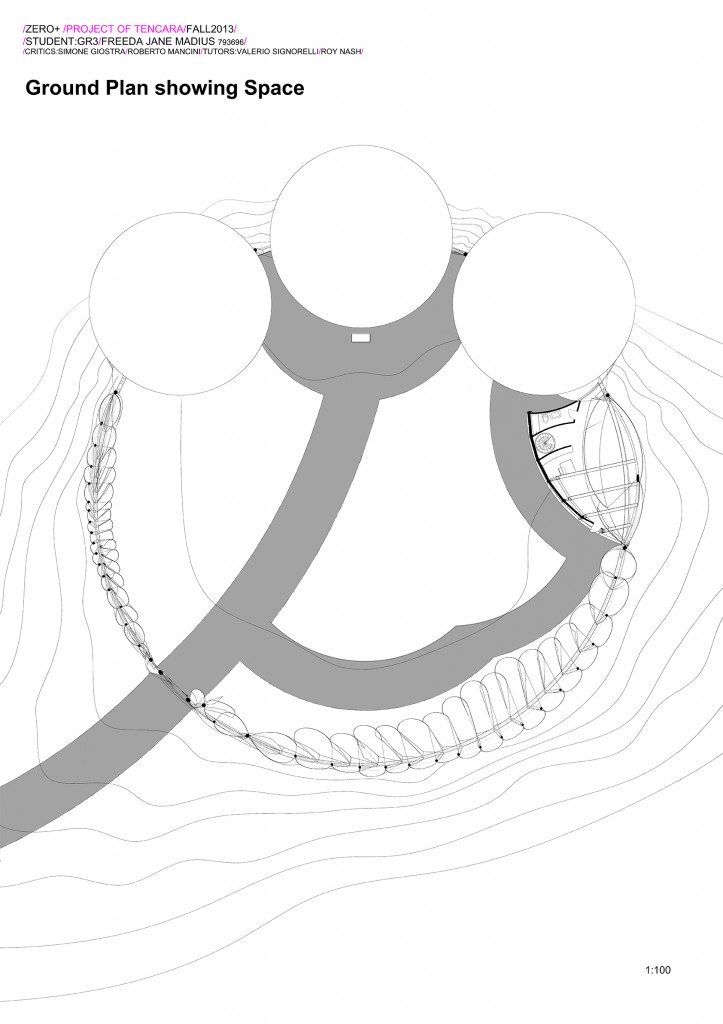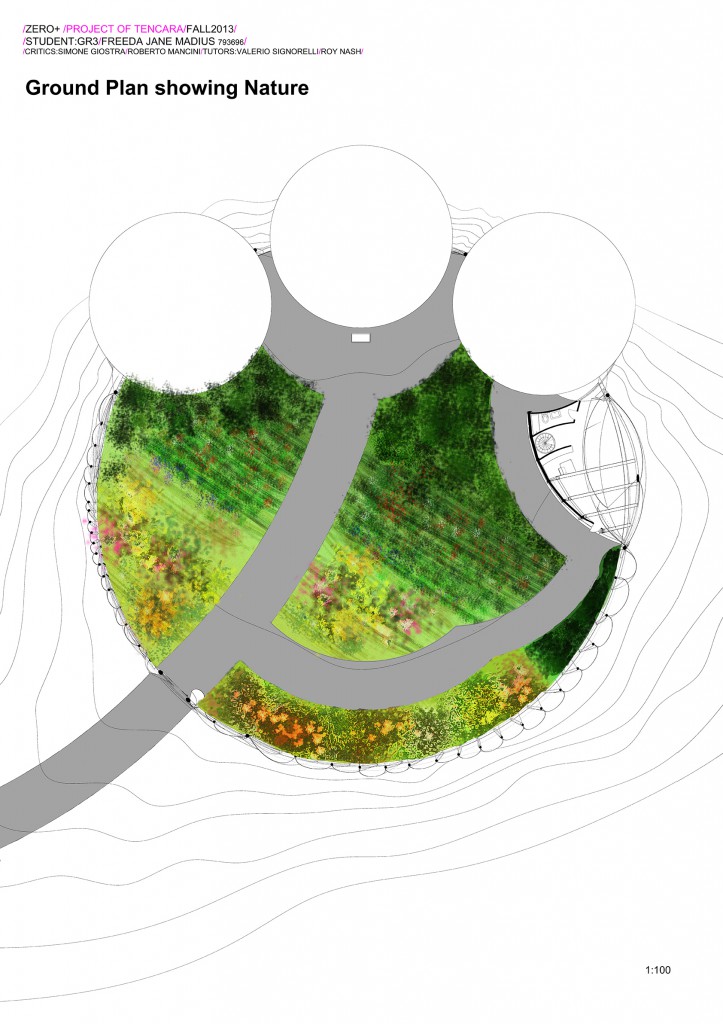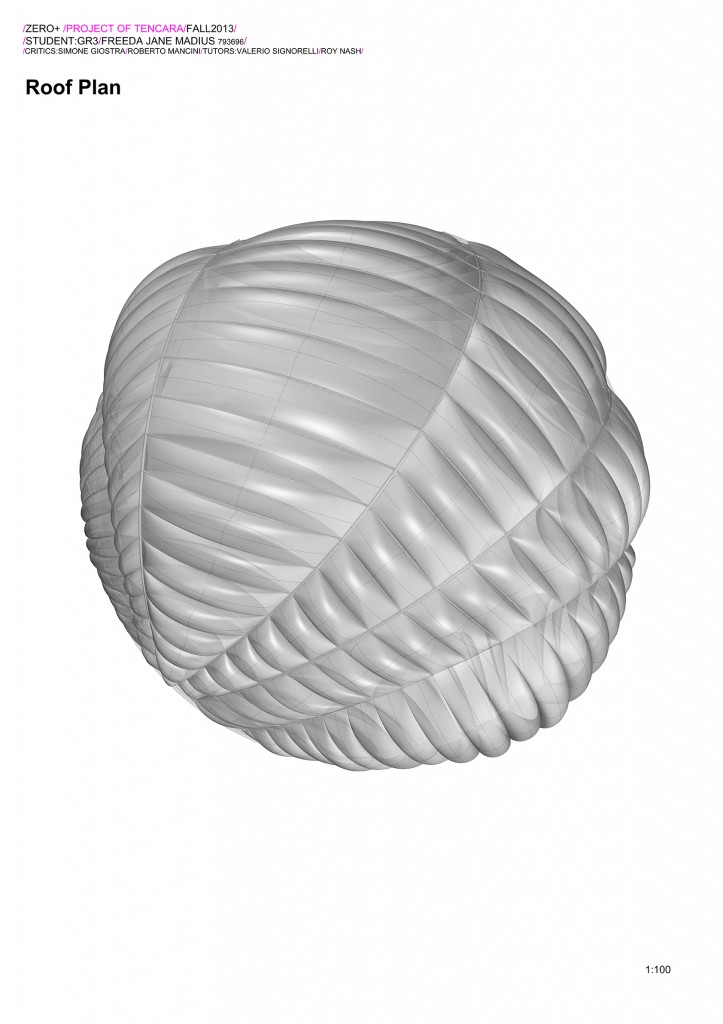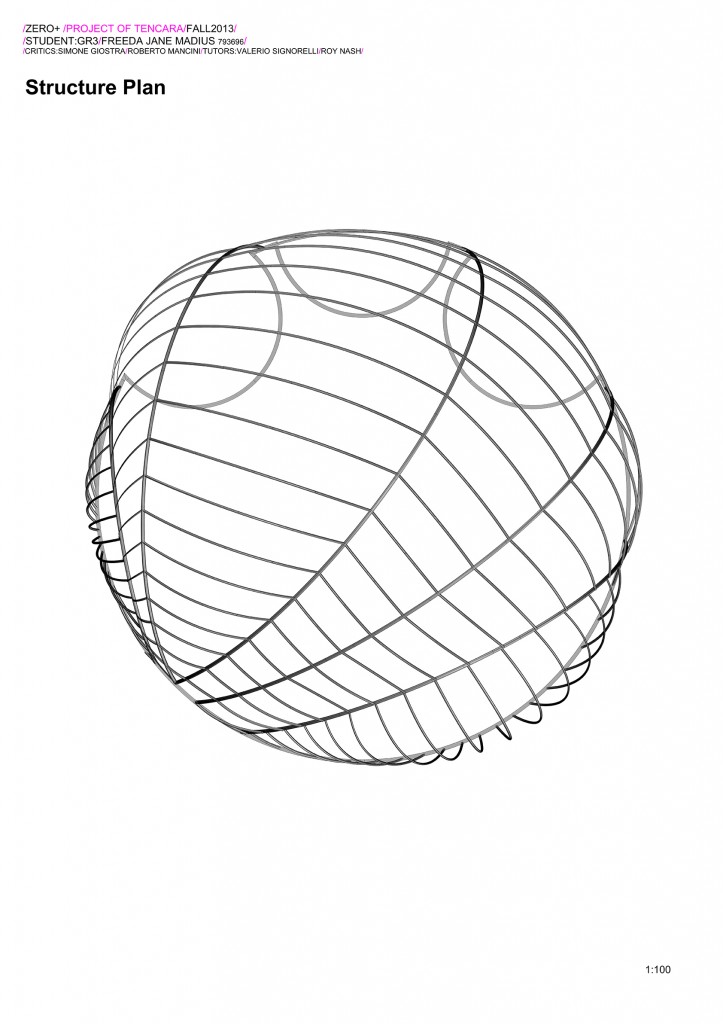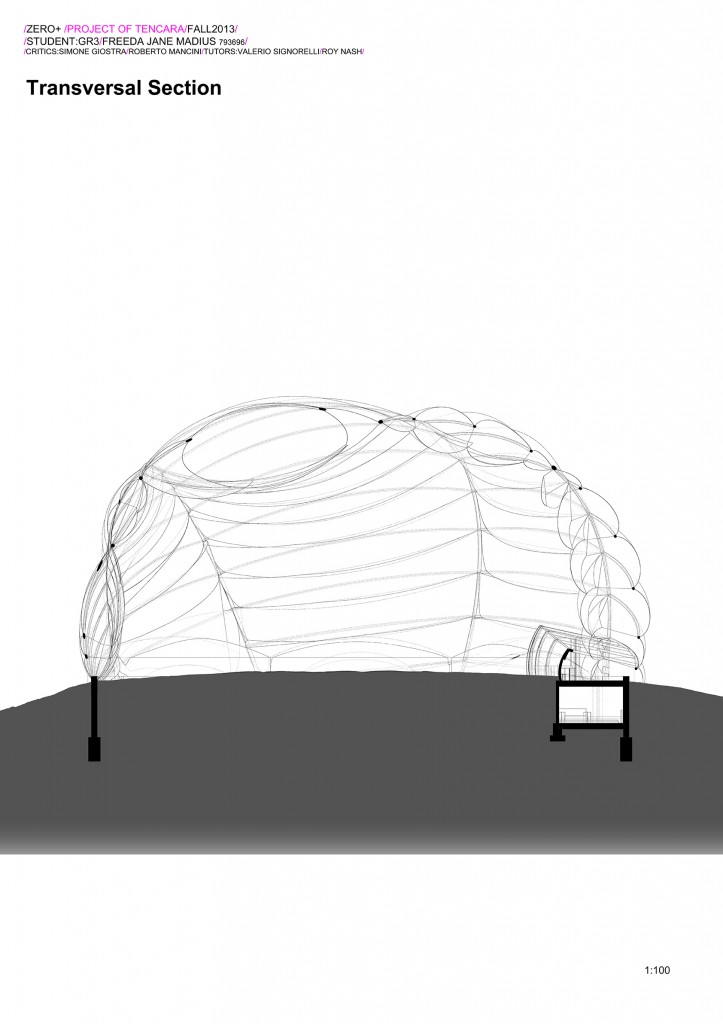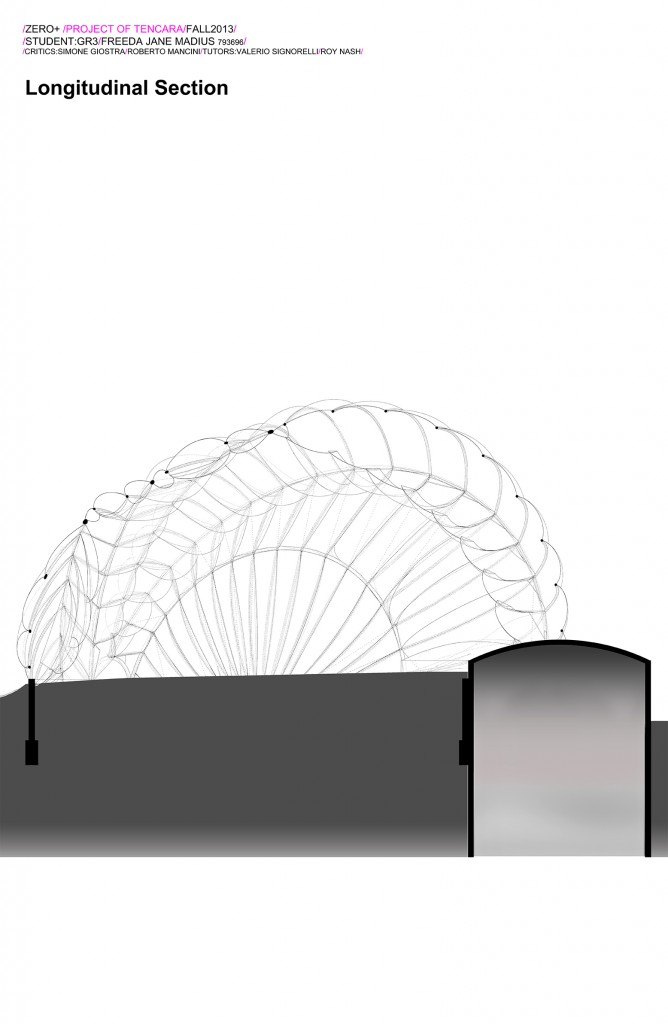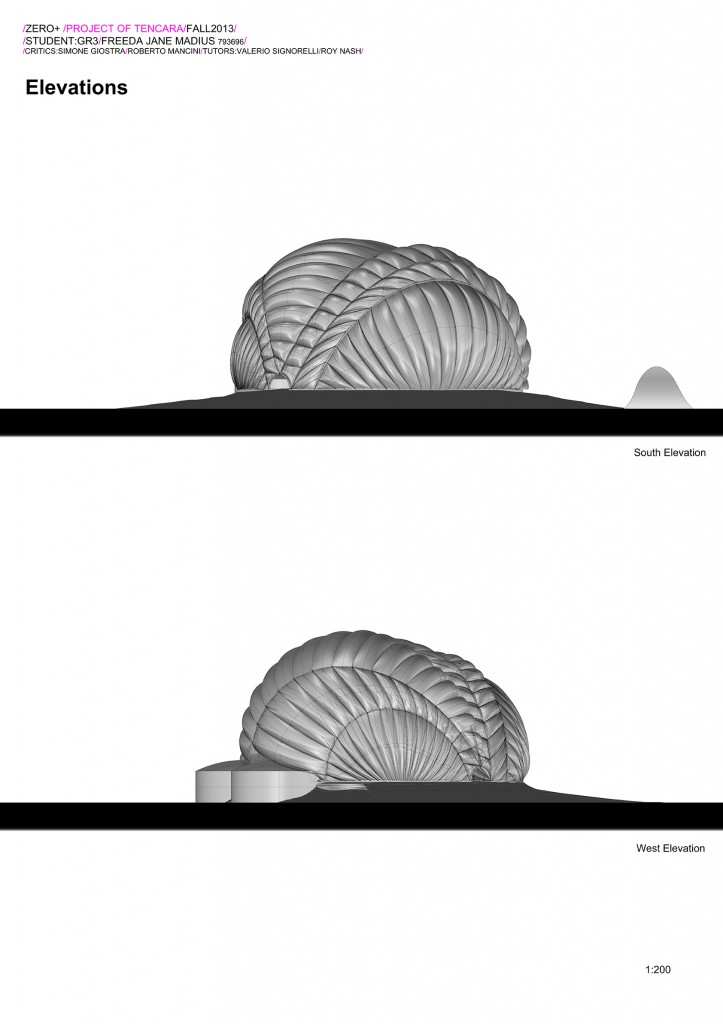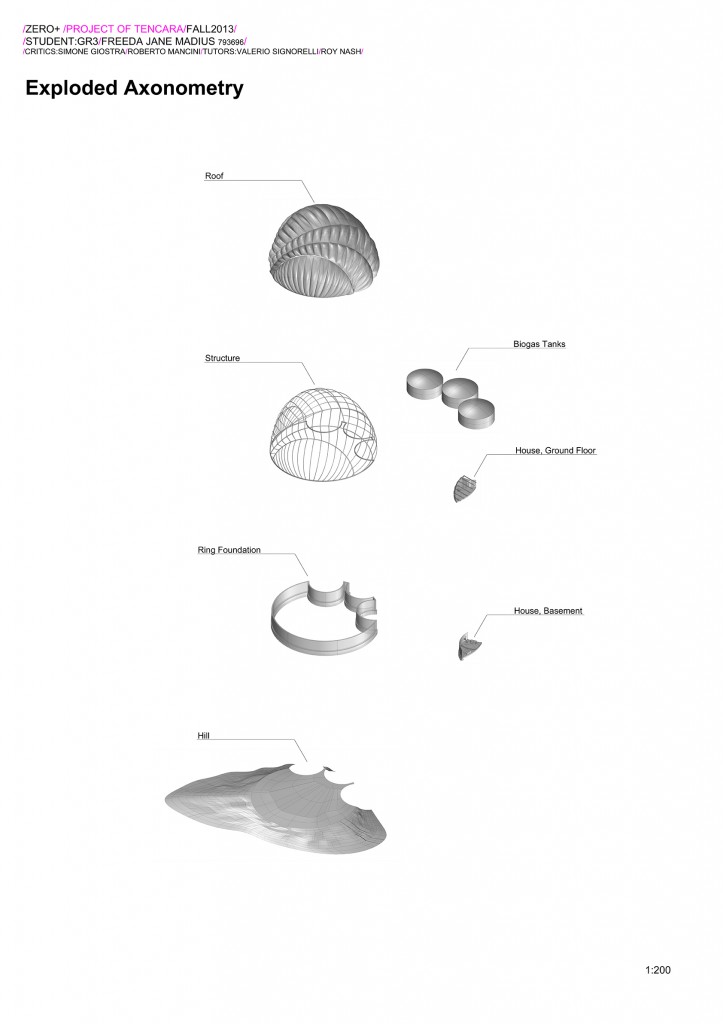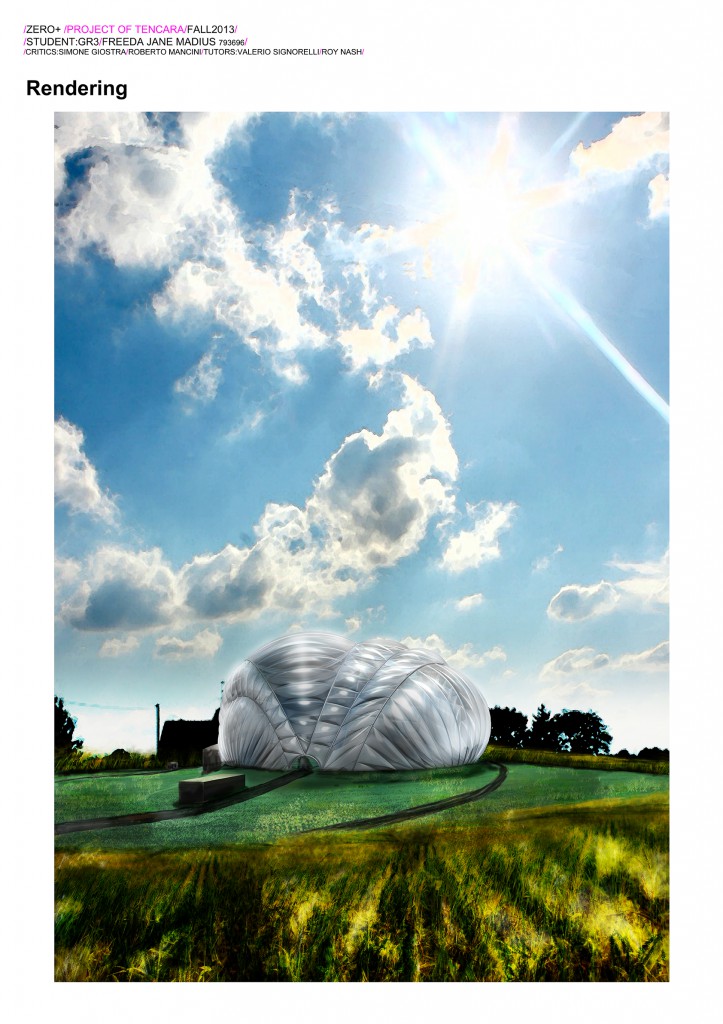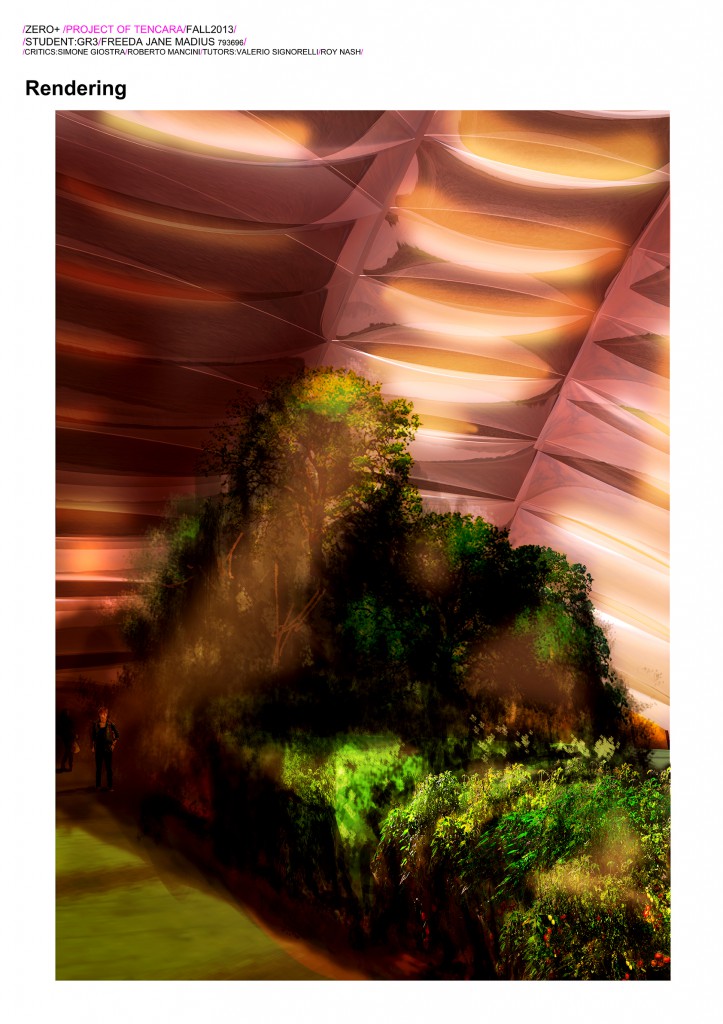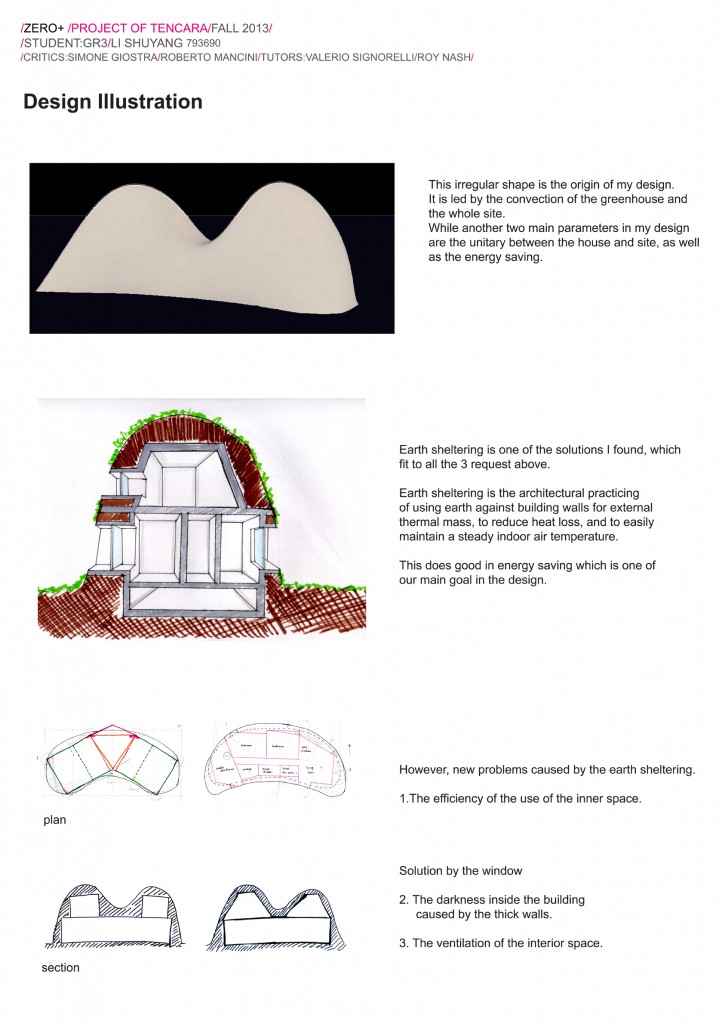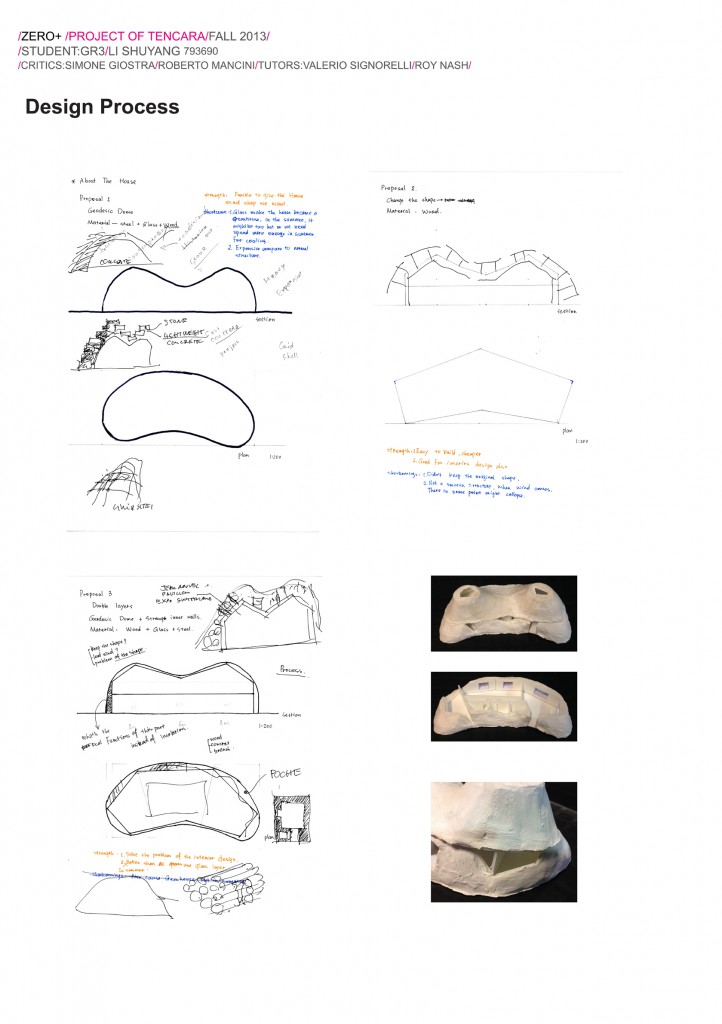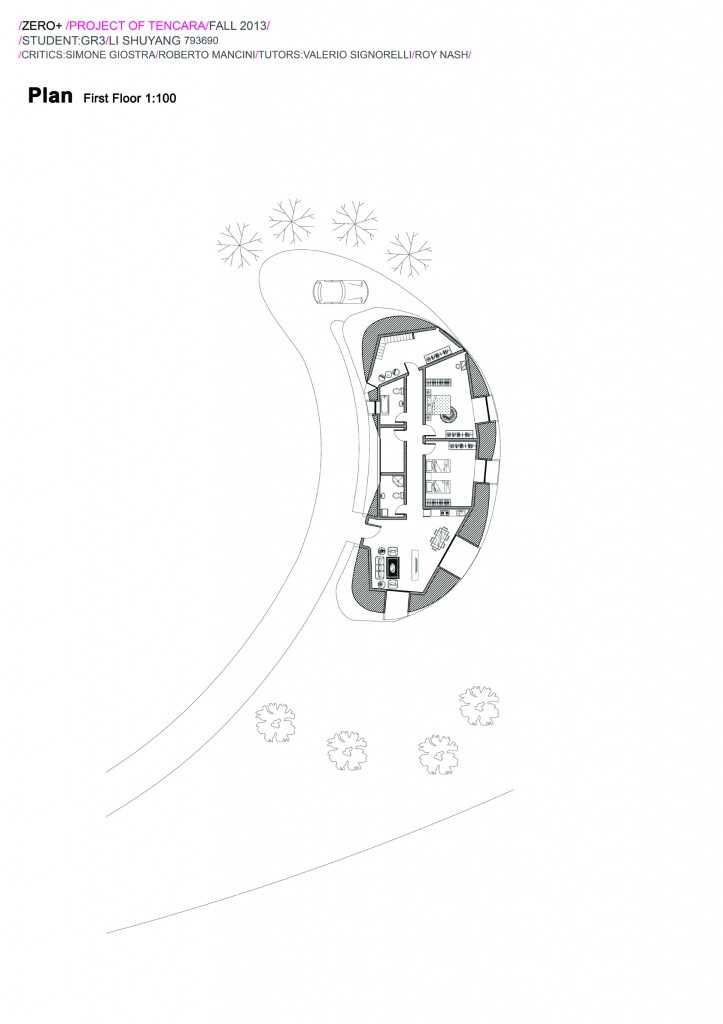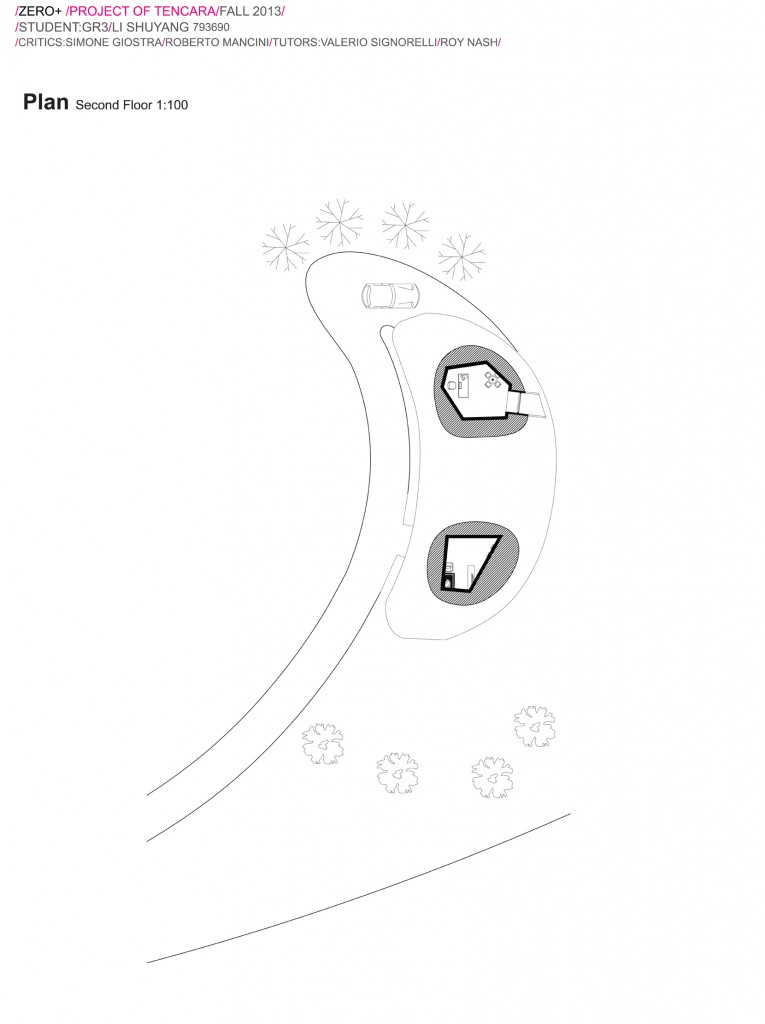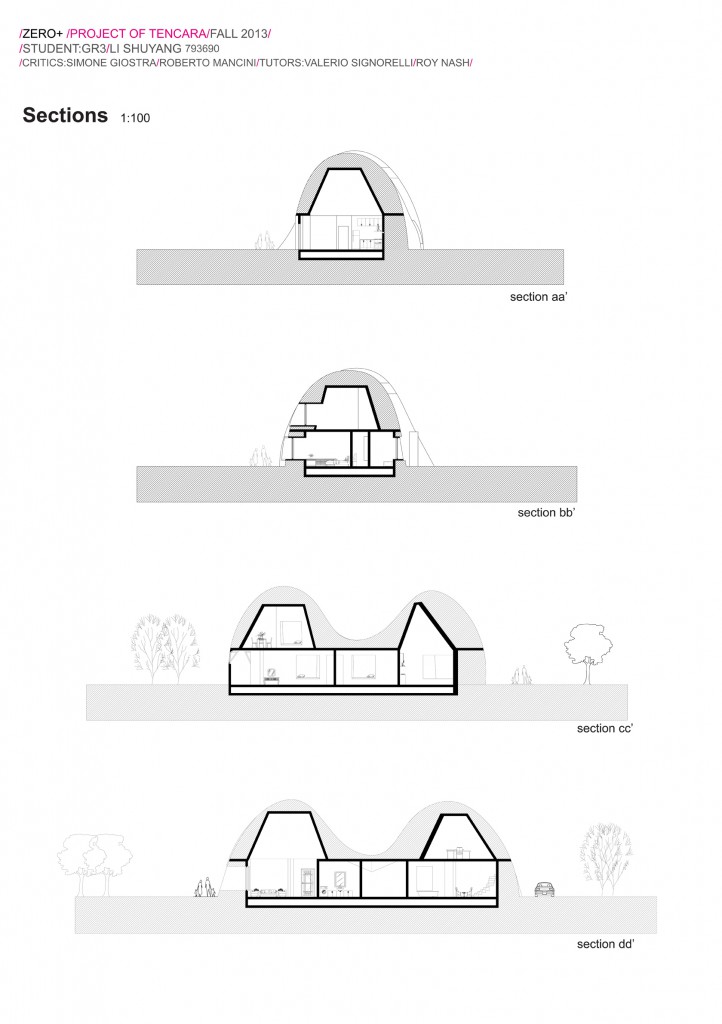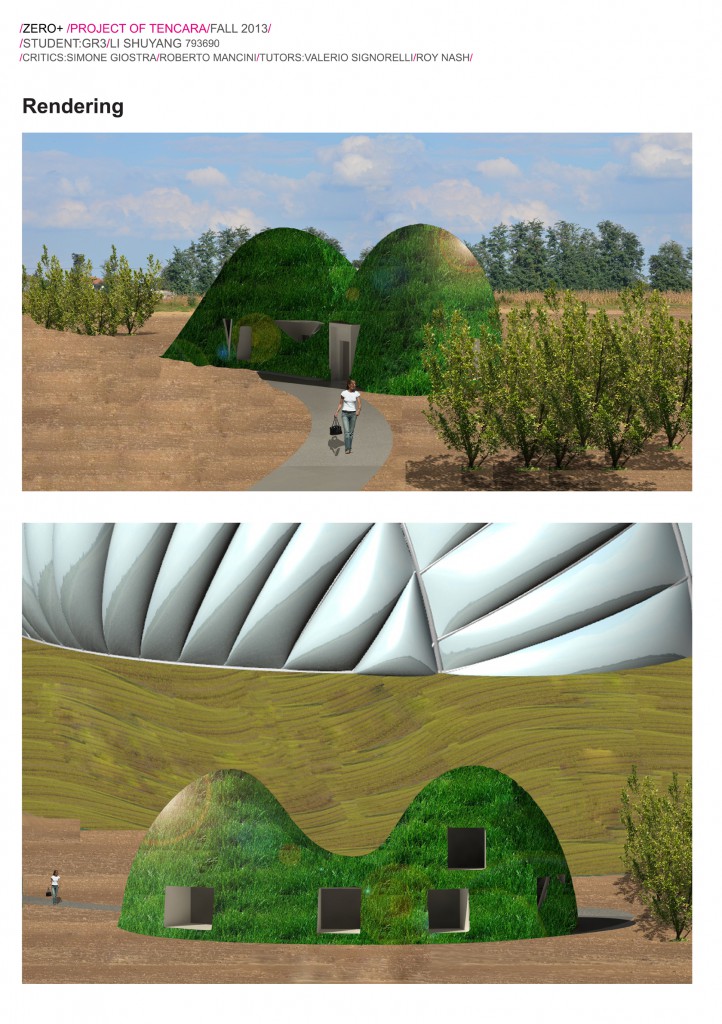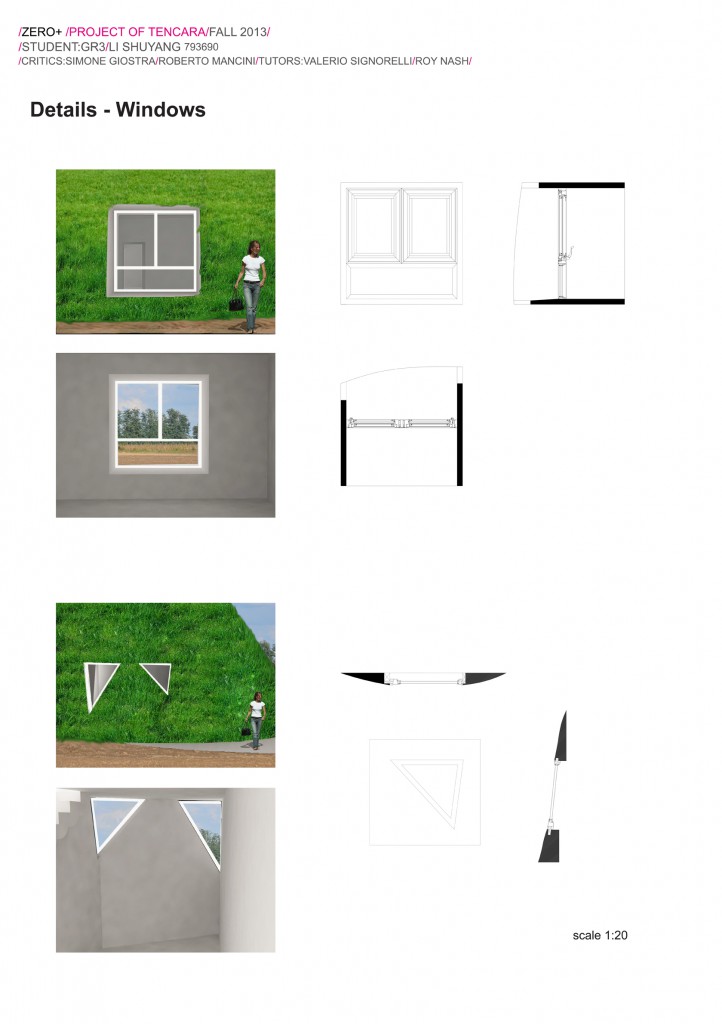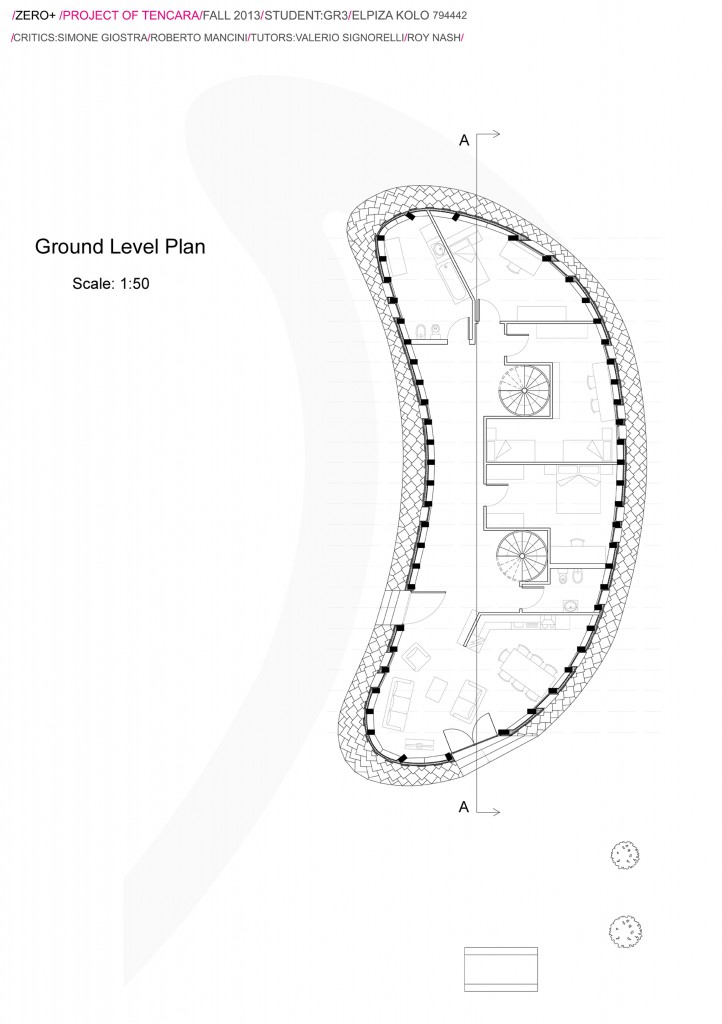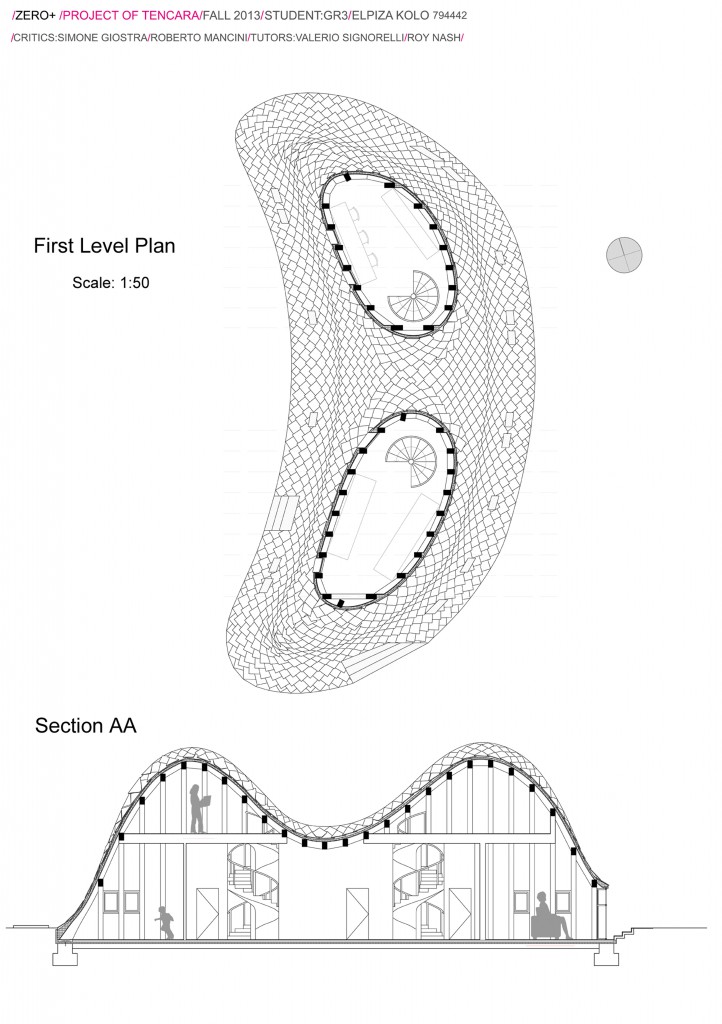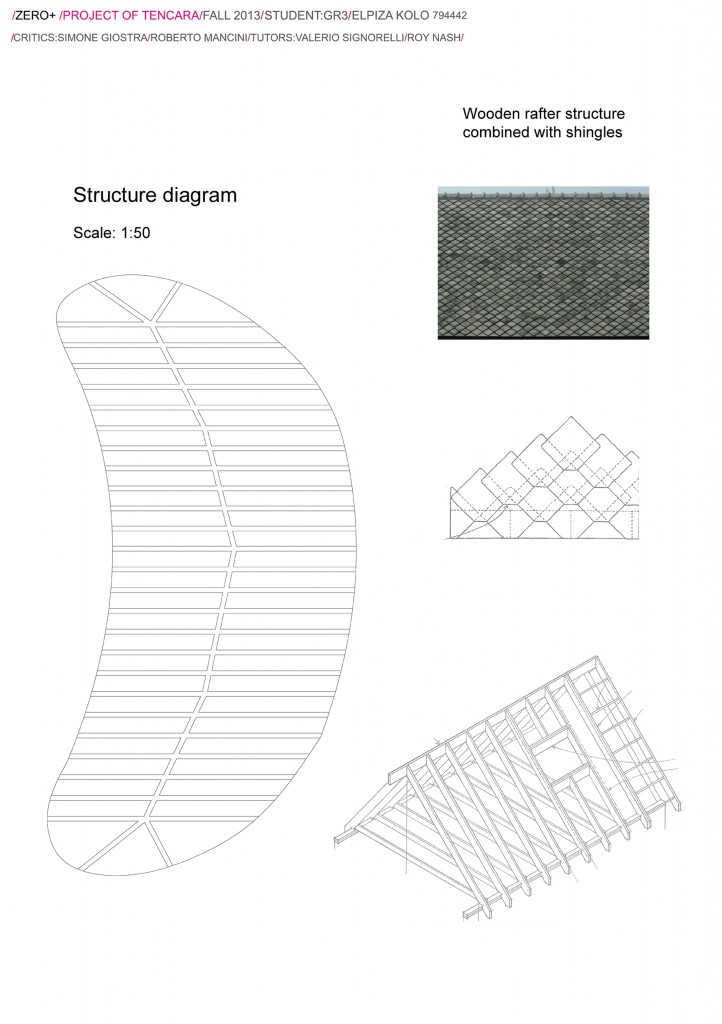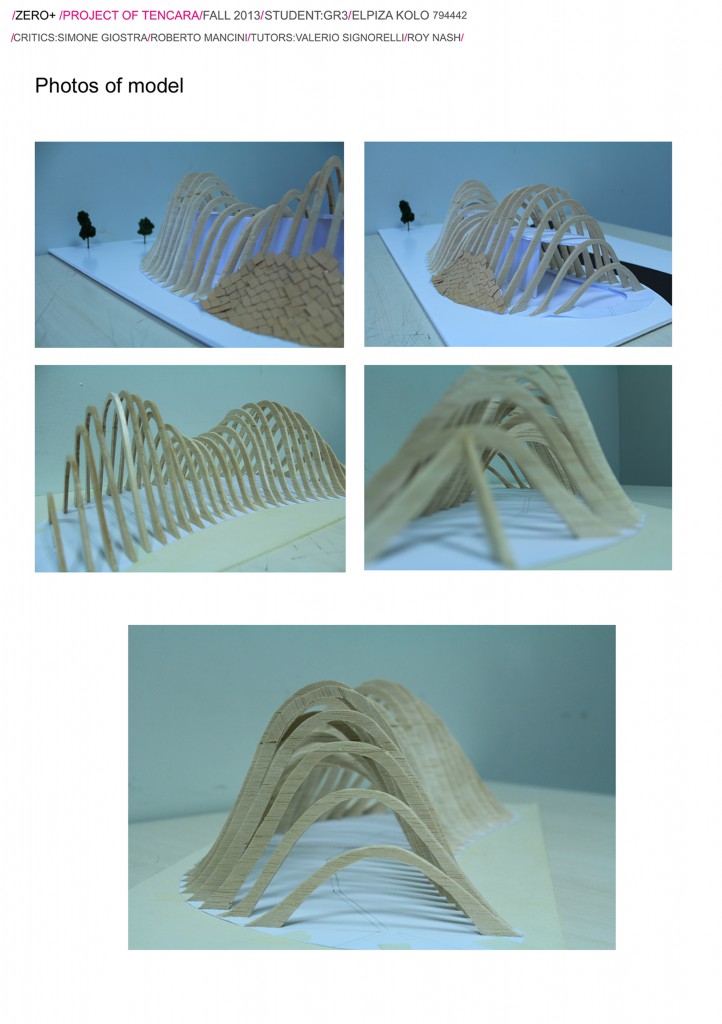F13: ∞
|
This is our work from this semester on the project of FEWs in the chosen site, Tencara. We started from an analysis of the surroundings by mapping the invisible forces and we concluded that the most appropriate technology to use in our site is biogas production for getting energy from processing waste combined with greenhouses for food supply. Animal waste is the main supply for the biogas digesters, so we located our 100×100 parcel as close as possible to the only animal farm in the Tencara site. We later proceeded with creating a pattern for the whole site for further implementation of the project. After researching the technical data about the technologies, we came up with two main principles to drive the site design: convection and temperature efficiency. We used convection to drive bad smell coming from the input tank of the biogas production system away from the house by putting the greenhouse between them and elevating it into a hill. For the hill only the soil coming from digging out to build the biogas digesters will be used. Convection also brought us to a really specific shape for the house, which is useful for accelerating the wind coming from the east, since the one from west is blocked by trees. We calculated the various slopes of the hill according to the convection analysis. For achieving the maximum temperature efficiency, we tried to keep the project compact by putting the biogas digesters attached to the greenhouse, the latest of which was a geodesic dome as a perfect shape for holding temperature. This organization also helped in the performance of the two combined technologies, as they need a certain minimal temperature for maximum production.
Later the project proceeded to being divided into three individual parts: a further development of the greenhouse shape from the original geodesic one and two different proposals for the house. 1) Freeda Jane Madius worked on the Greenhouse, which developed into an inflatable structure made of ETFE and aluminium. She focused on form finding to create a monumental building to be remembered.
2) Li Shuyang worked on the first house alternative. To realize the shape that we got by the convection as well as to save energy, she designed a house where the concrete structure is covered by earth shelter.
2) Elpiza Kolo worked on the second house alternative, by keeping the same shape as the one predefined by convection, but using a different technology. She focused on the structure and used wooden rafter “ribs” to support the outer envelope of the house, treating it like one single roof. This approach to the outer walls also brought a coverage by shingles, which is characteristic of roofs. These are the panels presented above in pdf format:
|
